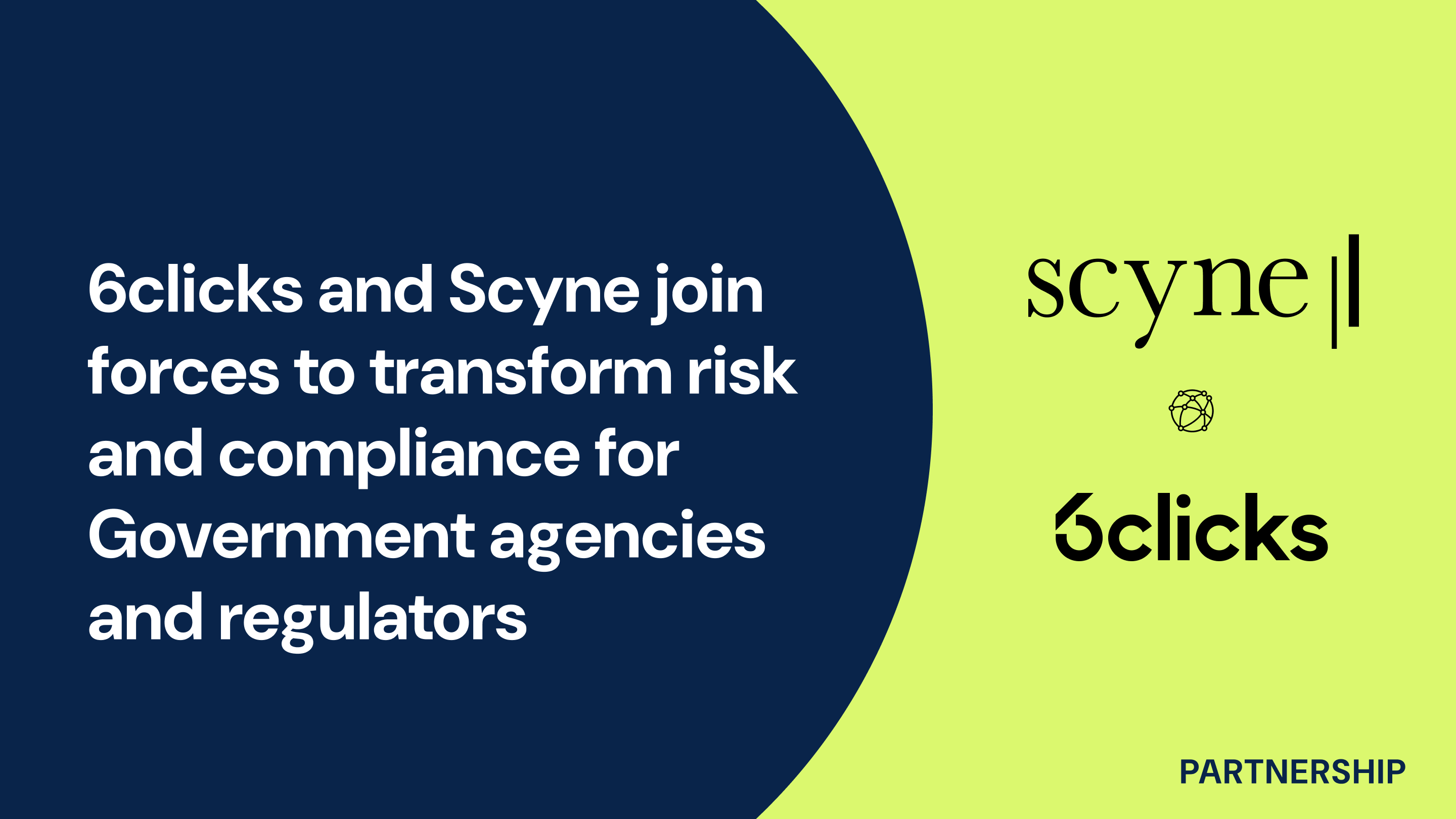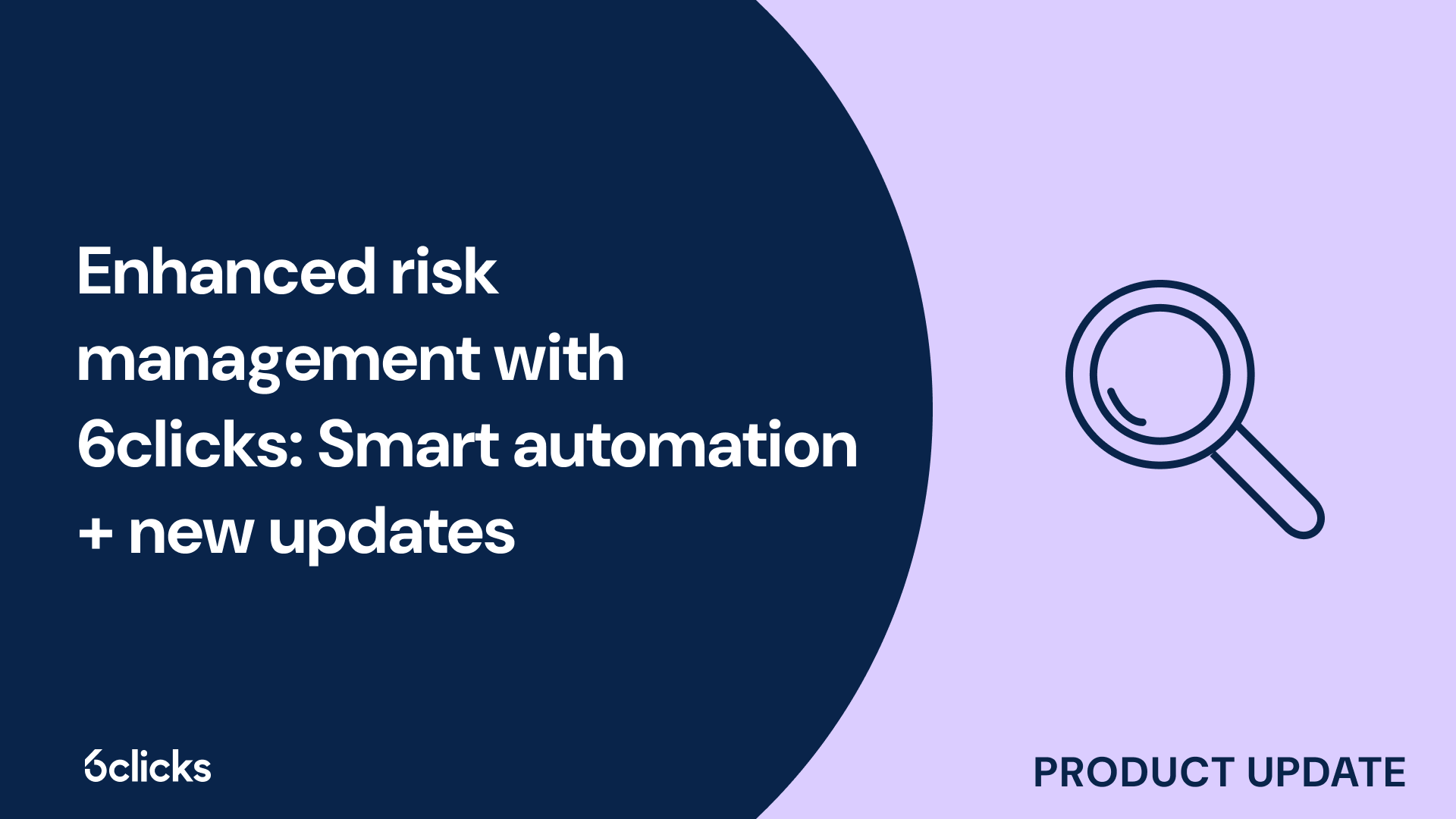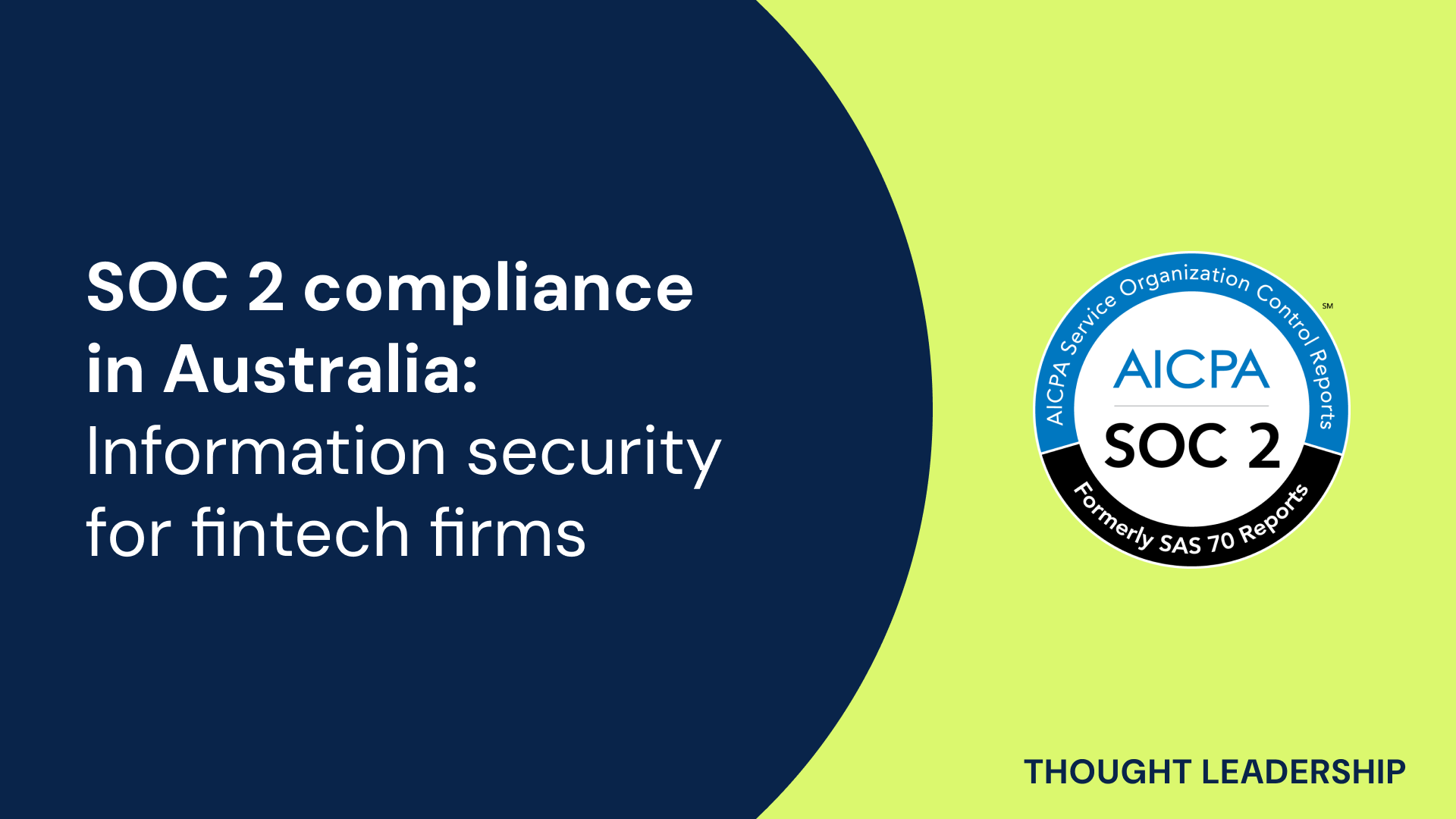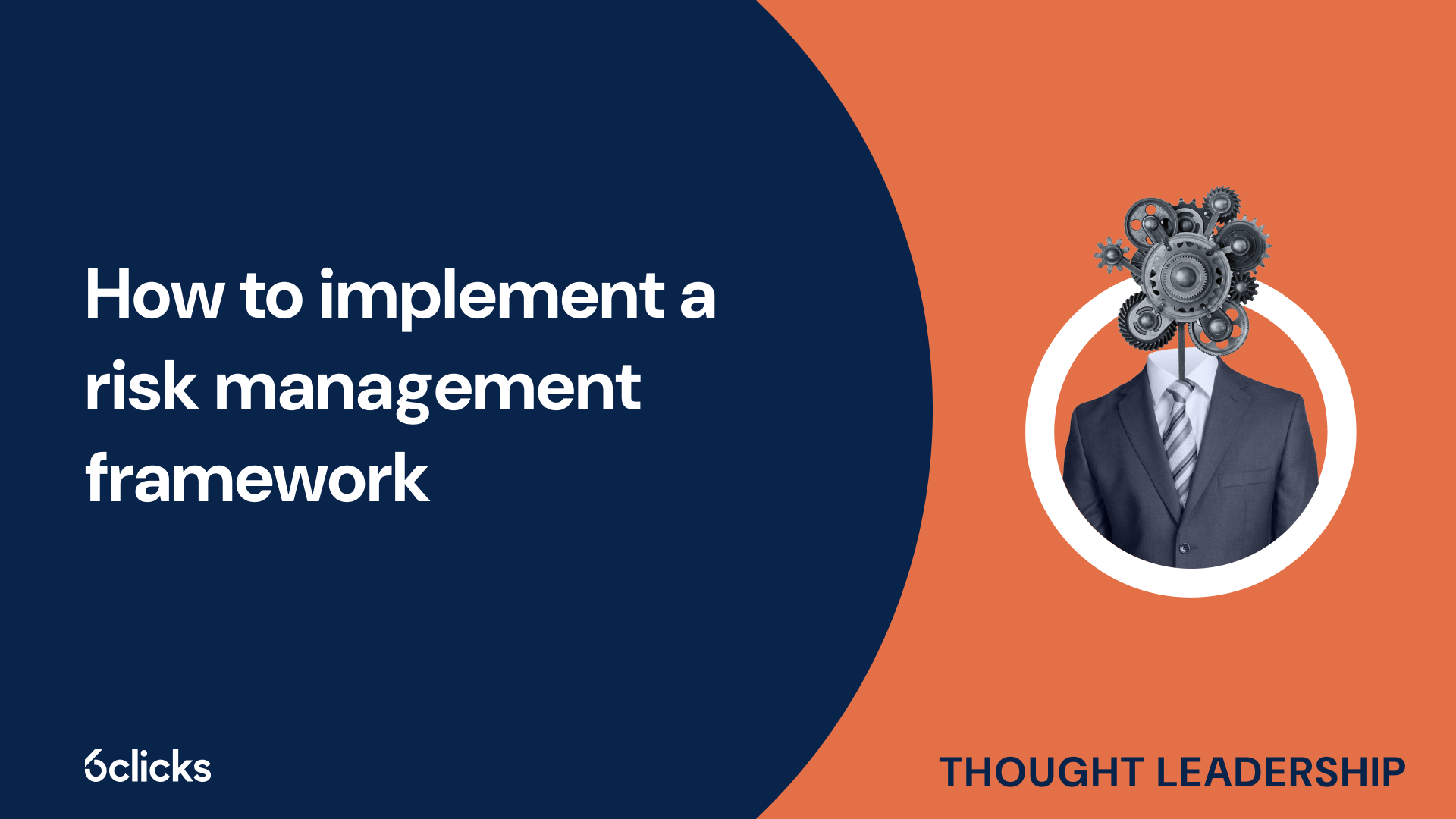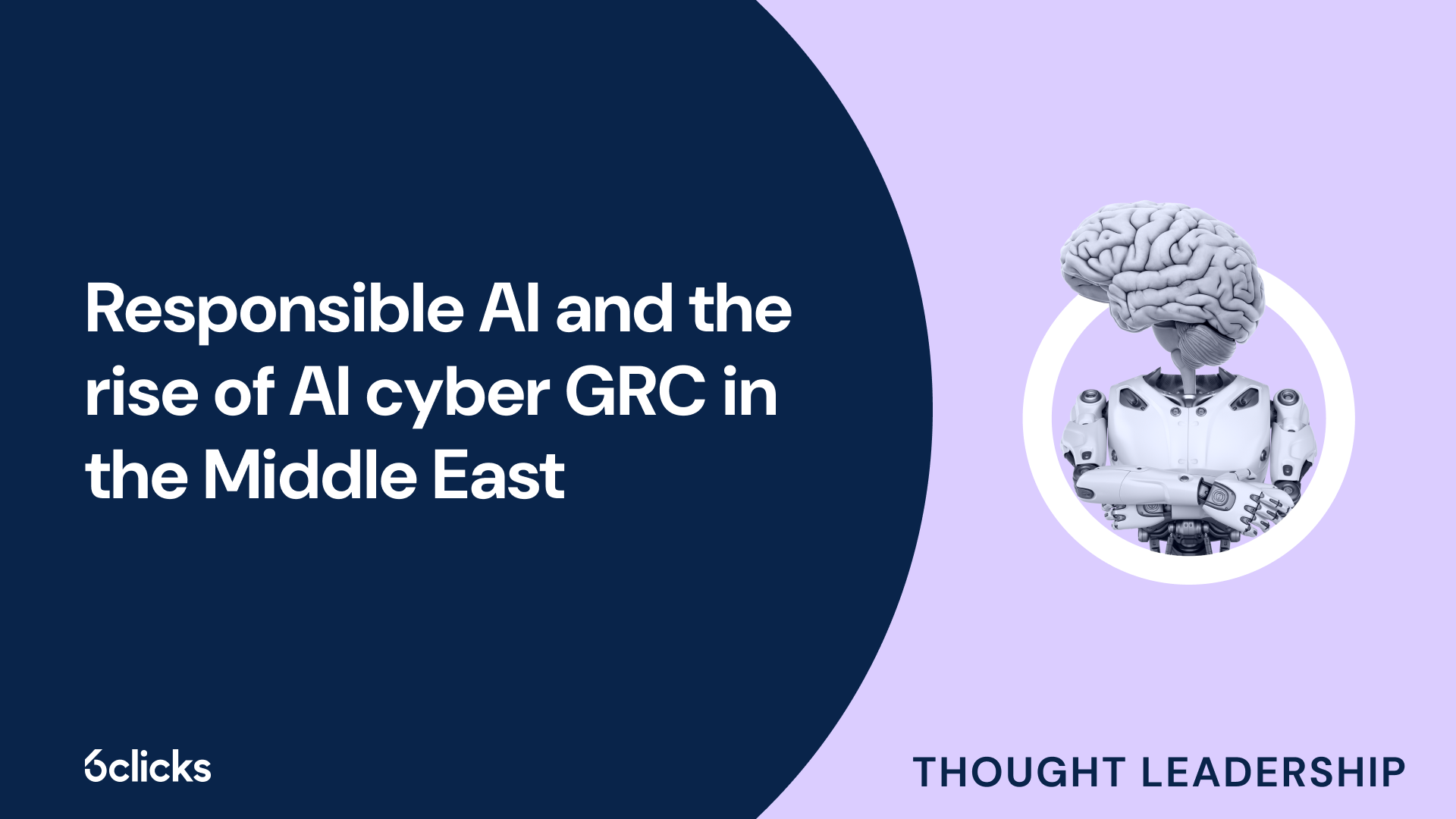The GRC buyer’s guide for 2025: Building resilience with AI-powered, federated solutions
Discover the ultimate GRC buyer's guide for 2025! Uncover how AI-powered, federated solutions transform compliance and security management for industries like government, aerospace, banking, and more. Learn about centralized control, continuous compliance, and advanced cyber GRC capabilities. Download now!
-1.png?width=200&height=249&name=Group%20193%20(1)-1.png)
The GRC buyer’s guide for 2025: Building resilience with AI-powered, federated solutions
What is a GRC program?
A GRC (Governance, Risk, and Compliance) program is an essential framework that enables organizations to effectively manage and mitigate risks, ensure regulatory compliance, and align business objectives with strategic goals. It encompasses a structured approach that combines governance, risk management, and compliance functions to create a comprehensive framework for making well-informed decisions and driving organizational success. By integrating these key components, a GRC program enables organizations to identify, assess, and address potential risks and compliance issues, while ensuring that business operations are aligned with industry standards and regulatory requirements. With the increasing complexity of the business environment, a holistic approach to GRC has become crucial for organizations to thrive and adapt to ever-evolving threats and challenges. A well-implemented GRC program establishes a governance framework that enables strategic risk management, policy management, and effective lines of communication across the entire organization, leading to improved business resilience, operational efficiency, and sustainable growth.
Benefits of an effective GRC program
An effective GRC (governance, risk management, and compliance) program provides numerous benefits to organizations. By implementing a well-structured and integrated GRC program, businesses can make improved decision-making, optimize their IT investments, eliminate silos, reduce fragmentation among divisions and departments, and ultimately reduce costs.
Improved decision-making is a key advantage of an effective GRC program. Through the implementation of robust risk assessments and compliance standards, organizations have access to accurate and up-to-date information that enables them to make well-informed decisions. This helps businesses identify potential risks, make strategic choices, and align their actions with their overall strategy.
Furthermore, implementing an effective GRC program allows organizations to optimize their IT investments. By proactively addressing potential risks and compliance issues, businesses can allocate their resources more efficiently and effectively, ensuring that their IT investments are aligned with their business goals and objectives.
GRC programs also play a crucial role in eliminating silos and reducing fragmentation within organizations. By establishing a structured and holistic approach to governance, risk management, and compliance, businesses can break down barriers between different divisions and departments, ensuring that there is effective communication, collaboration, and integration across the entire organization. This leads to more streamlined business processes, reduced redundancy, and improved overall efficiency.
Reducing costs is another significant benefit of implementing an effective GRC program. By automating manual processes and implementing technology solutions, businesses can streamline their compliance functions, reduce the likelihood of non-compliance penalties, and minimize the financial impact of potential risks and security breaches. Additionally, by having a comprehensive and integrated GRC framework, organizations can proactively identify areas for cost savings and improve their overall financial performance.
Internal audits
Internal audits are a critical component of an effective GRC program. These audits involve the systematic evaluation and assessment of an organization's operations, processes, and controls to ensure compliance with regulatory and internal requirements. Internal audits provide valuable insights into the effectiveness of a company's risk management strategies, overall governance framework, and compliance measures. They also help identify areas of non-compliance, potential risks, and opportunities for improvement. By conducting regular internal audits, businesses can proactively address any compliance discrepancies, strengthen their control systems, and ensure the integrity and accuracy of their financial reporting. Internal audits not only promote transparency and accountability within organizations but also help enhance the efficiency and effectiveness of their business operations.
The role of internal audits in a GRC program
Internal audits play a crucial role in an effective Governance, Risk, and Compliance (GRC) program. They serve as an essential component for organizations to identify potential risks, evaluate compliance with regulatory requirements, and assess the effectiveness of business processes.
One of the primary functions of internal audits is to ensure that organizations meet the regulatory requirements and compliance standards relevant to their industry. By conducting thorough examinations of the business's operations, policies, and processes, internal audits help companies identify any compliance issues or gaps in meeting the necessary requirements. This ensures that organizations stay in line with legal obligations and avoid potential penalties or reputational damage.
Furthermore, internal audits help organizations identify and assess potential risks across various areas, including regulatory compliance, security risks, and strategic risks. By examining and evaluating the business processes, systems, and controls, internal audits can pinpoint vulnerabilities and areas of concern. This enables organizations to implement corrective actions and mitigate these risks effectively.
Implementing and executing internal audits effectively
Implementing and executing internal audits effectively involves several key steps to ensure that the process is thorough and comprehensive.
The first step is to evaluate the various components of the business, including processes, people, policies, hardware, software, data architecture, regulatory requirements, and the vendor ecosystem. This evaluation allows auditors to understand the organization's overall structure and identify any potential areas of concern or risk.
Next, auditors should utilize auditing tools to assist in the process. Tools such as AWS Audit Manager can be extremely helpful in comparing actual performance with GRC goals and identifying areas for improvement. These tools provide a standardized approach to auditing, making the process more efficient and effective.
During the audit, it is important to compare the organization's performance to established GRC goals. This allows auditors to identify any deviations or gaps and determine whether the organization is meeting its compliance requirements. By comparing performance, auditors can identify strengths and weaknesses in the organization's processes and controls.
Finally, it is crucial to take corrective actions based on the findings of the audit. This may involve implementing new processes, updating policies, or addressing any identified deficiencies. By taking action, organizations can improve their overall GRC performance and reduce the likelihood of compliance issues.
Types of risks covered by internal audits
Internal audits in a GRC program cover various types of risks across multiple areas within an organization. These audits play a critical role in identifying and assessing risks related to regulatory compliance, operational processes, data security, financial integrity, and strategic objectives.
- Regulatory Compliance: Internal audits evaluate whether an organization complies with applicable laws, regulations, and industry standards. They assess whether the organization has established and implemented effective controls to mitigate compliance risks and avoid legal and financial penalties.
- Operational Processes: Audits review the effectiveness and efficiency of an organization's operational processes. This includes assessing the adequacy of internal controls, identifying process gaps or weaknesses, and recommending improvements to enhance productivity, reduce errors, and optimize resource allocation.
- Data Security: Internal audits focus on the protection and confidentiality of sensitive data. They assess the organization's data security measures, including access controls, data classification, encryption, and incident response processes. Audits help identify vulnerabilities and recommend measures to mitigate data breaches, unauthorized access, and data loss.
- Financial Integrity: Internal audits examine an organization's financial systems, processes, and controls. They verify the accuracy, reliability, and integrity of financial information, ensuring compliance with accounting principles and policies. Audits help identify fraud risks, irregularities, and financial misstatements, enabling organizations to maintain transparency and safeguard financial assets.
- Strategic Objectives: Audits evaluate whether an organization's strategies align with its objectives and assess the associated risks. They assess the effectiveness of strategic planning, resource allocation, and performance monitoring. Audits help identify potential risks that may impact the achievement of strategic goals and facilitate informed decision-making.
By covering these types of risks, internal audits provide organizations with valuable insights, enabling them to proactively manage risks, strengthen controls, and improve overall GRC performance.
Automating internal audit processes
Automating internal audit processes using tools like AWS Audit Manager can greatly enhance the efficiency and effectiveness of the auditing function within an organization. AWS Audit Manager is a powerful tool that streamlines and automates the entire audit lifecycle, from planning and scoping to data collection and analysis.
One of the key benefits of automating internal audits is efficient data collection and analysis. With AWS Audit Manager, auditors can easily collect data from various sources, such as cloud services, databases, and logs, eliminating the need for manual data entry and reducing the risk of errors. The tool also provides built-in analytics capabilities, allowing auditors to quickly analyze the collected data and identify trends, patterns, and anomalies.
By automating internal audit processes, organizations can also streamline workflows. AWS Audit Manager enables auditors to create standardized audit templates, pre-defined procedures, and checklists, eliminating the need for manual processes and ensuring consistency in audit execution. The tool also facilitates collaboration among auditors and stakeholders, making it easier to gather inputs, review findings, and track corrective actions.
Another significant benefit of automating internal audits is improved accuracy and consistency of audit findings. With AWS Audit Manager, auditors can leverage predefined control sets and compliance frameworks to ensure that audits are conducted in accordance with industry standards and regulatory requirements. The tool also provides real-time access to up-to-date policies and procedures, reducing the risk of outdated information and ensuring compliance with the latest guidelines.
Regulatory requirements
Regulatory requirements play a crucial role in shaping and guiding organizations' operations and practices. It is essential for companies to establish and maintain a comprehensive understanding of the ever-evolving landscape of regulations that govern their industry. By staying abreast of regulatory updates and compliance standards, organizations can build robust and effective programs to ensure adherence to the necessary legal and ethical requirements. This involves not only understanding the specific regulations that apply to the business, but also regularly monitoring changes, assessing the impact on operations, and implementing appropriate controls and measures. Organizations must strive to create a culture of compliance that permeates throughout the entire organization, with clear lines of responsibility and accountability. Compliance with regulatory requirements is not only essential for avoiding penalties and legal consequences, but it also helps businesses build trust and solid relationships with customers, partners, and stakeholders.
Understanding regulatory compliance requirements
Understanding regulatory compliance requirements is vital for organizations to adhere to industry standards and regulations. To achieve and maintain compliance, organizations must take various measures.
Extensive research is essential to understand the specific compliance standards applicable to the organization's industry. This research involves staying updated on industry regulations, analyzing applicable laws and guidelines, and identifying relevant best practices.
Internal audits play a crucial role in identifying potential compliance issues. Through these audits, businesses can assess their adherence to regulatory requirements and identify areas for improvement. External audits conducted by independent parties further validate the organization's compliance efforts.
Implementing security procedures and controls is essential to ensure compliance. This involves establishing comprehensive policies and procedures for data protection, access control, incident response, and other security measures. Regular monitoring of security measures and ongoing assessment of potential risks is necessary to maintain compliance.
Ultimately, understanding regulatory compliance requirements is about being proactive. Organizations must continually evaluate and update their compliance initiatives to adapt to changing regulations. By committing to research, conducting internal and external audits, and implementing robust security procedures, organizations can effectively meet compliance standards.
Meeting regulatory compliance standards and expectations
Meeting regulatory compliance standards and expectations is a critical aspect of any organization's operations. To achieve compliance, organizations must follow a structured approach that includes conducting compliance research, implementing security procedures and controls, creating documentation for compliance reporting, and integrating technology to improve compliance management.
Firstly, compliance research is essential to understanding and identifying the specific regulatory standards applicable to the organization's industry. This involves conducting thorough research on industry regulations, analyzing applicable laws and guidelines, and identifying relevant best practices. Staying updated on regulatory changes and requirements is crucial in meeting compliance expectations.
Secondly, implementing security procedures and controls is vital to ensure compliance. Establishing comprehensive policies and procedures for data protection, access control, incident response, and other security measures helps maintain regulatory compliance. Regular monitoring and ongoing assessment of potential risks are necessary to identify and address any security gaps promptly.
Furthermore, creating documentation for compliance reporting plays a crucial role in demonstrating adherence to regulatory standards. This includes maintaining accurate records, conducting internal audits, and documenting compliance activities to provide evidence of compliance efforts when required.
Lastly, integrating technology into compliance management can greatly improve efficiency and effectiveness. Utilizing compliance management software and other technological solutions can streamline compliance processes, automate data collection and analysis, and enhance reporting capabilities. This enables organizations to stay proactive, make well-informed decisions, and ensure compliance is consistently maintained.
By following these practices - conducting compliance research, implementing security procedures and controls, creating documentation for compliance reporting, and integrating technology - organizations can effectively meet regulatory compliance standards and expectations.
Potential risks of non-compliance
Non-compliance with regulatory requirements and standards can carry significant potential risks for organizations. Failure to adhere to these standards can result in severe penalties and fines, which can have a detrimental impact on the financial health of a company. These penalties can range from monetary fines to the revocation of licenses or permits, leading to disruptions in business operations.
In addition to financial consequences, non-compliance can also result in reputational damage. Negative publicity and loss of trust from customers, investors, and stakeholders can hinder growth and impact the overall success of the organization. Rebuilding a damaged reputation can be a time-consuming and costly process.
Furthermore, non-compliance with laws and regulations may lead to legal implications. This can include lawsuits, legal actions, or regulatory investigations, further draining financial resources and diverting management's focus from core business objectives.
Non-compliance can also impede an organization's growth potential. Failure to meet regulatory requirements can limit opportunities for expansion, access to funding, or participation in certain markets. Non-compliance may also lead to increased scrutiny from regulatory bodies, making it harder to navigate the business landscape.
To mitigate these potential risks, organizations must prioritize compliance, implement effective compliance programs, conduct regular audits, and stay informed about changing regulatory requirements. A proactive approach to compliance can help protect the organization's reputation, avoid legal implications, and foster sustainable growth in a highly regulated business environment.
Strategies for adopting and maintaining regulatory compliance
When it comes to adopting and maintaining regulatory compliance in a GRC (Governance, Risk management, and Compliance) program, there are several key strategies and best practices that organizations can follow.
Firstly, conducting thorough compliance research is essential. This involves identifying the specific regulatory standards and requirements that apply to your industry and organization. It is important to stay up-to-date with any changes or updates to these regulations to ensure ongoing compliance.
Implementing robust security procedures and controls is another important strategy. This includes establishing policies and protocols that address potential security risks, protecting sensitive data, and ensuring compliance with privacy laws. Regular assessments and audits should be conducted to identify any security vulnerabilities and address them promptly.
Accurate compliance reporting is also crucial in a GRC program. This involves establishing clear processes for tracking and documenting compliance activities, including risk assessments, policy management, training, and incidents. Compliance reporting should be timely, transparent, and accurate to demonstrate an organization's commitment to regulatory compliance.
Compliance requirements
Compliance requirements are an integral part of an effective GRC (governance, risk, and compliance) program. These requirements refer to the specific regulations, laws, and standards that organizations must adhere to in order to operate within legal and ethical boundaries. Compliance requirements can vary based on industry, geographic location, and the nature of the business. It is essential for organizations to thoroughly understand and stay updated on these requirements to ensure ongoing compliance. By incorporating compliance requirements into their GRC program, organizations can mitigate risks, avoid penalties, maintain customer trust, and safeguard their reputation. This involves conducting comprehensive research, implementing security measures, and establishing accurate reporting processes to address compliance requirements effectively.
Identifying core compliance requirements for your business
Identifying the core compliance requirements for your business is a crucial step in developing an effective GRC (Governance, Risk, and Compliance) program. By understanding and addressing these requirements, you can ensure that your organization operates in adherence to relevant regulations and industry standards. Here are the steps to identify the core compliance requirements for your business:
- Conduct customer research: Begin by understanding customer expectations and requirements related to compliance. Conduct surveys, interviews, and market research to gain insights into what your customers expect in terms of data privacy, security, and other compliance-related concerns.
- Engage key stakeholders: Internal conversations with key stakeholders such as senior executives, legal counsel, and IT leaders are essential. These discussions help identify specific compliance requirements based on your industry, geography, and business operations.
- Assess partner compliance programs: If your business relies on partnerships or has a supply chain, analyze the compliance programs of your partners. Understand the requirements they follow and align your own compliance efforts accordingly.
- Evaluate architectural elements and data sensitivity: Assess your organization's infrastructure, systems, and data sensitivity to identify compliance requirements related to data protection, privacy, access controls, and security measures.
- Research compliance frameworks: Investigate and compare various compliance frameworks applicable to your industry. These frameworks, such as GDPR, HIPAA, or ISO standards, outline specific compliance requirements that your business needs to meet.
- Identify overlapping requirements: Analyze the identified compliance frameworks to identify commonalities and overlapping requirements. This allows you to streamline your compliance efforts and avoid duplication of work.
By following these steps and incorporating customer expectations, internal feedback, and industry standards, you can effectively identify the core compliance requirements for your business. This proactive approach ensures that your GRC program is comprehensive and aligned with regulatory expectations.
Establishing policies and procedures to ensure compliance
Establishing policies and procedures to ensure compliance is a crucial aspect of any organization's governance, risk management, and compliance (GRC) program. These policies and procedures serve as guiding principles for employees, helping them understand and comply with the various legal, regulatory, and ethical requirements that impact the organization's operations.
The process of creating and implementing effective compliance measures involves several steps. First, it is important to identify the compliance requirements that are applicable to the organization. This includes understanding industry regulations, internal standards, and best practices that govern the organization's operations. Conducting a thorough analysis of these requirements helps ensure that the organization is aware of the obligations it needs to meet.
Once the compliance requirements have been identified, the next step is to develop clear and well-defined policies and procedures. These policies should outline the expected behavior and actions of employees in areas such as data privacy, information security, anti-corruption, and other relevant compliance areas. Clear policies help employees understand their responsibilities and make informed decisions that align with the organization's compliance objectives.
When developing compliance policies, it is important to consider various key elements. These include industry regulations, which are specific to the organization's sector and outline mandatory compliance requirements. Internal standards, on the other hand, reflect the organization's own operational requirements and expectations. Additionally, adopting best practices allows the organization to go beyond minimum compliance requirements and strive for excellence in its compliance efforts.



